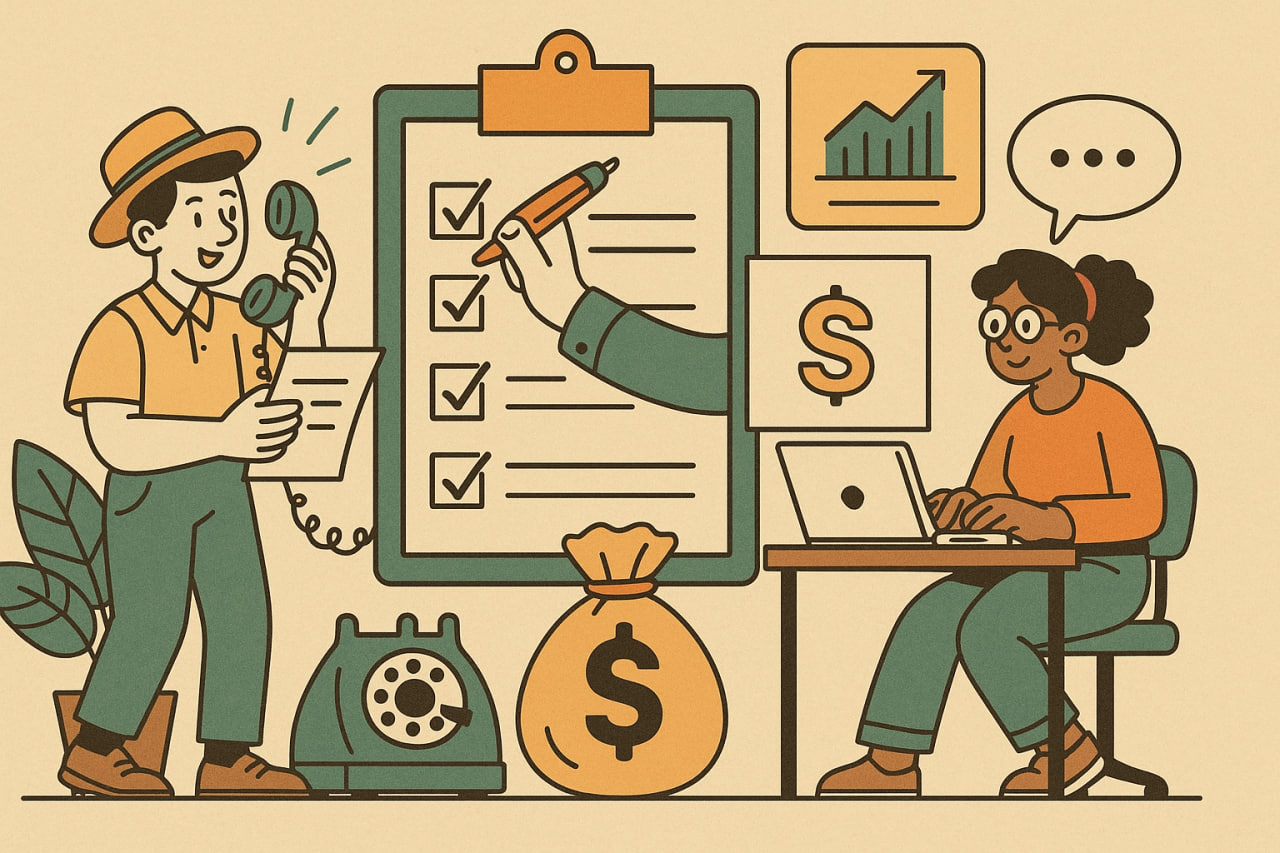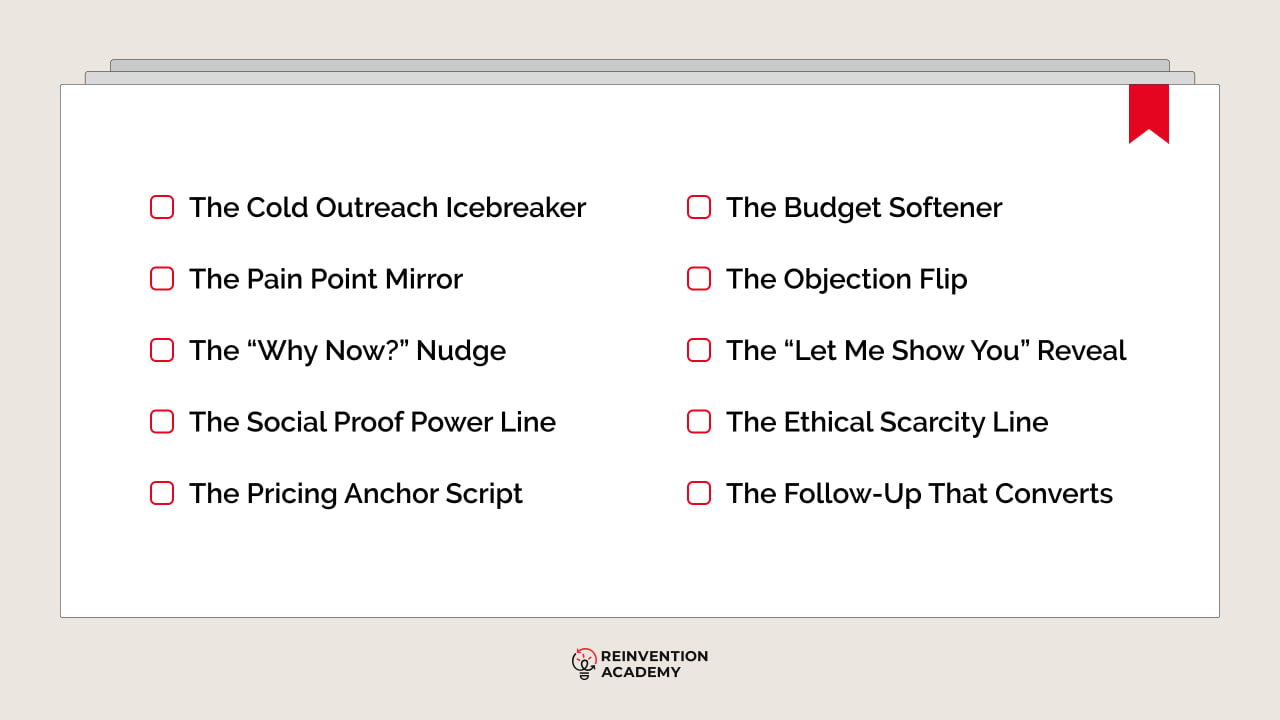The Top 10 Sales Scripts Every Consultant Needs to Close Deals in 2025
Master the top 10 sales scripts consultants use to win clients and close deals. Learn proven approaches for building trust, handling objections, and sealing agreements.

Why Consultants Need Sales Scripts in 2025
Sales isn’t about pressure; it’s about clarity, empathy, and creating value. For consultants, selling often feels awkward. You’re solving problems, not pushing products. Yet without a solid sales approach, even the most brilliant solution gets overlooked.
In 2025, competition is tougher than ever. Clients are savvier, attention spans are shorter, and trust is harder to earn. That’s where sales scripts come in. They aren’t robotic templates. They’re tested frameworks that help you stay confident and focused, navigate objections with empathy, and reinforce your value throughout the client journey.
Scripts aren’t about memorization, they’re about structure. They guide you in knowing what to say, how to say it, and when to pivot. With these tools, you reduce decision fatigue and can truly listen, adapt, and deliver impactful consulting conversations.
The 10 Essential Sales Scripts
These ten sales scripts are more than lines; they're consultative tools designed to build trust, uncover needs, and drive decisions with confidence.
1. The Cold Outreach Icebreaker
When to use it: First contact via email or LinkedIn DM
Script: “Hi [Name], I’ve been following your [project/industry insight] and noticed [pain point]. I help [similar roles] solve that through [approach]. Would you be open to a quick 15-minute chat next week?”
Expanded Insight: This script is designed to break through the noise without being intrusive. By referencing something relevant to your prospect, you create instant connection and credibility. Mentioning a specific pain point shows you’ve done your homework and aren't sending mass spam. A short, low-pressure ask respects their time and opens the door for further engagement.
2. The Pain Point Mirror
When to use it: During discovery or early calls
Script: “You mentioned struggling with [X]. That’s exactly what I’ve seen with other clients. What happens if that’s not fixed in the next 3–6 months?”
Expanded Insight: The power of this script lies in reflection. Mirroring the client’s words back shows that you’re listening. Following up with a future-oriented consequence question shifts the conversation from passive observation to active decision-making. It prompts urgency and positions you as someone who understands long-term business impact.
3. The “Why Now?” Nudge
When to use it: When deals stall
Script: “Just so I can prioritize things, are you aiming to solve [X] this quarter, or is it more of a next-year priority?”
Expanded Insight: Often, prospects freeze not because they don’t see value, but because priorities are unclear. This question is non-threatening but effective. It prompts introspection and gives you valuable insight into their internal timeline and seriousness. It also subtly emphasizes that your time is valuable and you’re managing capacity.
4. The Social Proof Power Line
When to use it: Mid-call or proposal stage
Script: “One of our clients in [industry] had the same challenge and you’d be surprised how quickly they saw results once we [strategy/action].”
Expanded Insight: This script adds credibility without resorting to boasting. By using social proof, you help prospects imagine their own transformation through another’s success. Keep it relatable and focused on outcomes, not features. Done right, it makes your offer feel safer and more tangible.
5. The Pricing Anchor Script
When to use it: When discussing packages or retainers
Script: “Let’s talk results first. Based on what we’ve discussed, solving [X] could save or generate around [$X]. My consulting starts at [$X], with options that scale based on your goals.”
Expanded Insight: Rather than diving into numbers blindly, this script anchors your pricing in outcomes. It encourages the client to evaluate cost through the lens of potential ROI. It shifts the focus from "price" to "value," helping reframe your services as a strategic investment instead of an expense.
6. The Budget Softener
When to use it: When you sense budget hesitancy
Script: “I totally get budget is a factor. Can I ask, if money weren’t an issue, is this something you’d move forward with?”
Expanded Insight: This is a reality-check question. If they say yes, it’s confirmation that you’re the right fit and pricing may just be an obstacle to overcome together. If they say no, then the problem might lie in trust or perceived value. Either way, it gives you a clearer picture and helps you redirect the conversation productively.
7. The Objection Flip
When to use it: When hearing "We’re not ready" or "We’ll think about it"
Script: “I hear that a lot. Can I ask what would need to happen for this to become a priority?”
Expanded Insight: Rather than fighting objections, this script leans into them with curiosity. You’re giving your prospect space to reflect and identify internal blockers. Sometimes they need more stakeholder buy-in; sometimes it’s timing. By asking, you stay in the conversation and can help co-create a path forward.
8. The “Let Me Show You” Reveal
When to use it: Before a proposal or decision meeting
Script: “Instead of just talking strategy, can I quickly show you how we’d tackle this using your real data or scenario?”
Expanded Insight: Seeing is believing. Rather than relying on abstract benefits, use this script to create a mini-demonstration. It’s not about giving away the whole solution—it’s about proving you’ve got insight and capability. This builds trust and shifts the conversation from theoretical to tangible.
9. The Ethical Scarcity Line
When to use it: Near the decision point
Script: “I’m keeping space for one more client this quarter. Would you like me to reserve that for you while you’re finalizing?”
Expanded Insight: Scarcity motivates action but only when it’s real. This line creates urgency while respecting autonomy. You’re showing that your time is valuable and limited. If they’re serious, this will prompt them to commit. If not, you’ve created clarity around your availability.
10. The Follow-Up That Converts
When to use it: Post-call or after a stall
Script: “Just wanted to circle back, has anything changed on your end since we last spoke? I’d love to hear where things stand.”
Expanded Insight: Too many follow-ups feel cold or robotic. This one is conversational and human. It opens space for an honest update and keeps the relationship alive. Including a small piece of value, a relevant article, podcast, or insight, can strengthen your positioning without appearing desperate.

Sales Scripts vs. Improvisation: Use Both
Sales scripts give you confidence, but adaptability closes deals. The most effective consultants use scripts not as rigid blueprints but as flexible frameworks they adapt in real time. This balance between structure and spontaneity is where real sales mastery lives.
Why Scripts Alone Aren’t Enough
Scripts are powerful tools for preparation. They reduce decision fatigue, help you remember key phrases, and provide a proven pathway for the conversation. But no client interaction follows a perfect script. If you cling too tightly to your lines, you risk missing the emotional signals, questions, or hesitation your prospect is giving off. That’s when sales become robotic and ineffective.
Imagine you’re using a pitch about a pricing model and your client starts showing signs of confusion. If you're too focused on finishing the script, you might miss the moment to pause and reframe your explanation or ask a clarifying question.
When to Pivot from Script to Improvisation
Being able to pivot is essential when:
- A prospect gives an unexpected objection or question
- The conversation goes off-script due to a unique situation or emotional reaction
- You realize the prospect’s challenge is different than what you assumed
- You’re building rapport or need to show empathy in real-time
Here’s how to stay agile:
- Memorize the intent, not the words. Understand the goal of each script section and whether it's to qualify, handle objections, or establish credibility. This lets you adapt language while keeping the purpose intact.
- Practice listening more than speaking. Let the client guide the flow. Active listening is your best improvisation tool.
- Prepare for key variations. Build mental branches into your script: "If they say this, I’ll pivot here. If they seem skeptical, I’ll reinforce with a story."
How to Train the Balance
- Roleplay scenarios with colleagues or coaches where scripts go off-track
- Record sales calls and review how well you balanced structure with responsiveness
- Study improv techniques, like mirroring, paraphrasing, and asking open-ended questions
Reinvention Mindset: Blend Both to Build Trust
Dr. Nadya Zhexembayeva teaches that reinvention is not about following a playbook, but rather it’s about building the capacity to adapt within a structure. That principle applies to sales.
Your script is your safety net. Improvisation is your human edge.
When consultants blend thoughtful preparation with real-time emotional intelligence, they build credibility, trust, and long-term relationships, not just closed deals.
Use your script as a launchpad. Then, let your listening and intuition guide the rest.


.svg)